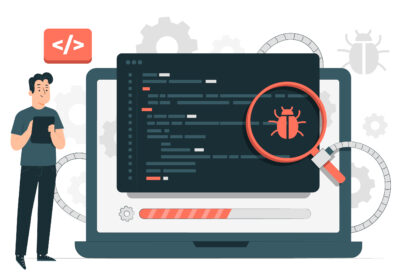With the growing importance of mobile applications in modern business, ensuring user information security is now a crucial necessity. The app market continues to expand, with over 4 million apps available across the App Store and Google Play. This makes protecting user data not just a choice, but an imperative for developers and companies. Data breaches can result in severe financial losses and irreparable damage to a company’s reputation. Below are five critical steps to prevent data breaches in your app.
What Is a Data Leak?
A data leak occurs when sensitive or confidential information is accessed without authorization, either over the internet or through physical means like hard drives. Data leaks can lead to a wide range of consequences, from financial losses to a loss of user trust.
Data leaks can be categorized into four main types:
- Customer Information: Includes names, addresses, credit card details, and passwords.
- Company Information: Includes internal communications, marketing strategies, and proprietary business data.
- Trade Secrets: Plans for upcoming products, proprietary code.
- Analytics: Customer behavior data, predictive models.
It’s important to differentiate between a data leak (unintentional exposure of data) and a data breach (malicious exploitation of exposed data).
Common Causes of Data Leaks
Understanding the causes of data leaks is essential for preventing them. Common causes include:
- Poorly configured software or app settings
- Social engineering attacks like phishing
- Weak or reused passwords
- Physical theft of devices
Awareness of these causes helps in implementing effective preventive measures.
Five Ways to Prevent Data Breach in Your App
1. Encrypt Everything
Encryption is a primary defense for protecting sensitive data. It converts data into unreadable ciphertext, ensuring it can only be decrypted using a specific key.
- Symmetric Encryption: Both the encryption and decryption use the same key. While faster, it offers less security than asymmetric encryption.
- Asymmetric Encryption: Uses a pair of keys (one for encryption, one for decryption). Although slower, it provides greater security.
However, encryption alone is not sufficient. Skilled hackers can sometimes break encryption methods, so encryption should be part of a more comprehensive security strategy.
2. Avoid Caching Data
Caching frequently accessed data, such as saved usernames or passwords, can improve user experience. However, cached data can create significant security risks if not managed properly, as it may expose sensitive information like cookies, form inputs, transaction histories, or even images.
- Recommendation: Avoid caching sensitive data, or implement strict policies to ensure that only non-sensitive data is cached. If caching is unavoidable, ensure data is encrypted and automatically clear cache data regularly.
3. Monitor Network Access
Constantly monitoring network traffic is essential for identifying potential security threats. By tracking who accesses data and how, you can detect suspicious activity early on and take action before a breach occurs.
- Network Access Control: Implement strict access controls to ensure only authorized personnel can access critical data.
- Real-Time Monitoring: Use network monitoring tools to identify unusual behavior or unauthorized access, which could indicate an attempted data breach or leak.
4. Use Data Loss Prevention (DLP) Software
Data Loss Prevention (DLP) software integrates technology and policy to prevent unauthorized data leakage or misuse. DLP systems use techniques like machine learning and AI to classify, identify, and protect different types of data based on their sensitivity.
- Categorization: Data is classified into categories (e.g., public, confidential, sensitive) to apply appropriate protection mechanisms.
- Detection & Response: DLP systems can detect a breach immediately and trigger alerts or take corrective actions (e.g., blocking access or encrypting data).
Implementing DLP ensures that your data is continuously monitored, classified, and protected from accidental or malicious leaks.
5. Risk Assessment of Third Parties
Your app’s security depends not only on your own practices but also on the security of third-party vendors and services you integrate with, such as cloud storage providers or payment gateways. If these vendors fail to maintain strong security practices, they could pose a significant risk to your app.
- Risk Assessments: Regularly assess the security practices of your third-party vendors to ensure they meet regulatory standards and internal security protocols.
- Continuous Monitoring: After establishing a relationship with third parties, continue monitoring their security practices and assess the risks periodically to ensure your app’s data remains safe.
Conclusion
Data breaches are a significant threat to any application, especially when dealing with sensitive user data. By encrypting data, preventing unnecessary caching, monitoring network access, using DLP software, and assessing third-party risks, you can substantially reduce the chances of a data breach. These steps form a robust security framework that helps protect your users, your business, and your reputation. Keep in mind that maintaining security is an ongoing process, requiring constant vigilance and updates to address new threats.
Protect your app, protect your data!





